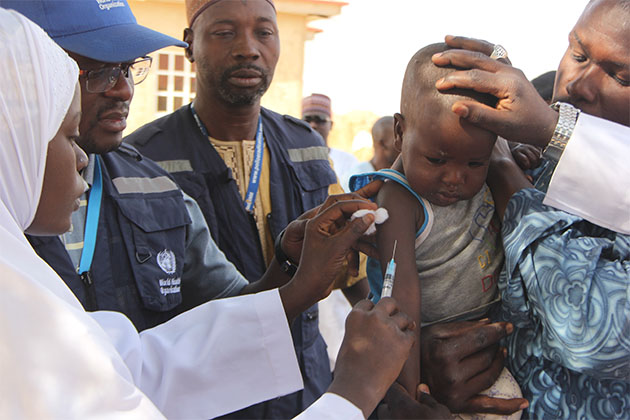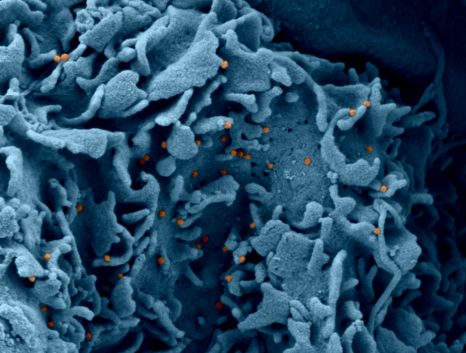
WHO©C. Onuekwe
The World Health Organization (WHO) recommends a single dose of the yellow fever vaccine for individuals aged 9 months or older living in or traveling to areas at risk of disease transmission, but there is a lack of data on its long-term efficacy when administered to infants. José Enrique Mejía, Inserm researcher at Unit 1043 Center for Pathophysiology of Toulouse Purpan and Cristina Domingo from the Robert Koch Institute in Berlin have recently shown that around half of children initially protected by the vaccination at 9 months of age lose that protection within the next 2 to 5 years, due to disappearance of the neutralizing antibodies. This research has been published in The Lancet Infectious Diseases.
Yellow fever is a viral infection spread by various species of mosquito and is rife in 34 countries in Africa and 13 in Latin America. Infection may be asymptomatic and go unnoticed or, on the contrary, it may progress rapidly to severe illness with fever, headache, muscle pain, nausea, vomiting and fatigue. The virus attacks the liver cells, often causing jaundice from which the disease gets its name. Severe bleeding occurs in 25 to 50 % of cases, with high levels of mortality observed 7 to 10 days after the onset of symptoms.
Since 2013, WHO recommends a single dose of the vaccine for life-long protection. This recommendation is based on proof of long-term efficacy, in vitro and in vivo, established in adults and children over 2 years of age.
But data on the long-term efficacy of primary vaccination in infants are absent, despite 9-12-month-olds being the main targets of routine vaccination in countries in which yellow fever is endemic. In this respect, WHO recommended research into the long-term persistence of the immunity conferred by vaccination in this age group. This research was performed by José Enrique Mejía from Unit 1043 Center for Pathophysiology of Toulouse Purpan in partnership with Cristina Domingo from Robert Koch Institute in Berlin, and researchers from the USA, Ghana and Mali, with support from the Wellcome Trust.Their study verified whether children to whom the vaccine was administered at around 9 months of age were still protected several years later. The team studied two cohorts, one from Mali (587 children) and the other from Ghana (436 children), in whom the levels of specific antibodies to the yellow fever virus had been measured 4 weeks after vaccination. They then repeated the measurement several years later, with findings from previous studies enabling them to estimate that levels above 0.5 IU/ml should protect children from infection.
In the Malian cohort, 4.5 years after vaccination, only half of the children continued to present levels of antibodies above 0.5 IU/ml. And 19.3 % presented detectable antibodies but at levels below this recommended threshold (<0.5 IU/ml). The proportion of children seropositive for these antibodies was therefore 69.7 % as opposed to 96.7 % just after vaccination.
In the Ghanaian cohort, 2.5 years after vaccination, only around 30 % of children continued to be protected against infection and 11.7 % continued to present specific antibodies but in low concentrations (<0.5 IU/ml). All in all, 39.4 % of the children were considered seropositive as opposed to 72.7 % just after vaccination.
Irrespective of the differences in vaccine efficacy between these two groups, which could be explained by ethnic and environmental factors (urban/rural population, seasonality of vaccination, diet, exposure to other infectious agents, etc.), the results in both cases show a substantial fall – practically by half – in the levels of protective antibodies in the years following vaccination, and which predict the absence of protection against infection for large numbers of children.

